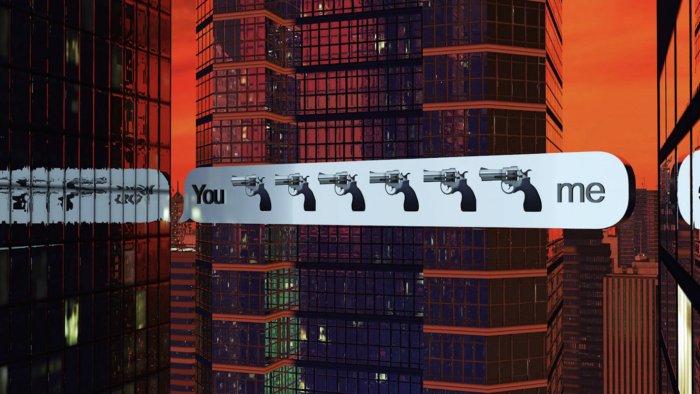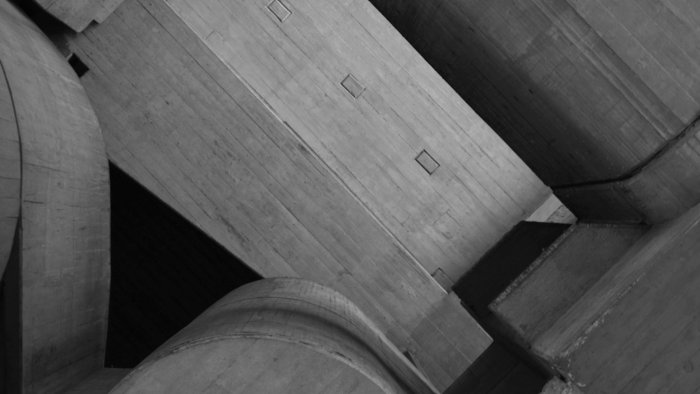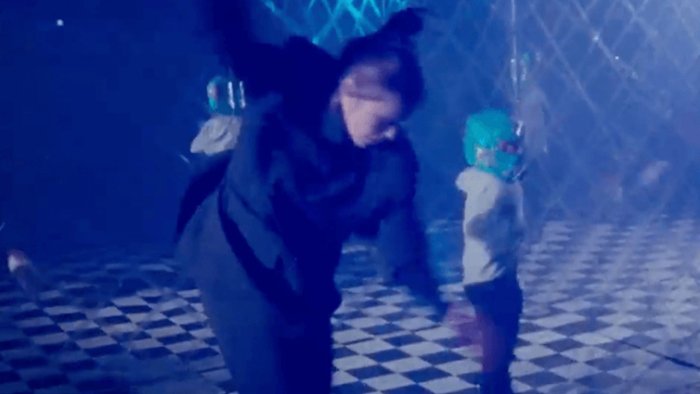Videoex Zürich 2020
After a visit to the film festival, I go back to the question: «What does "experimental" mean?» Text by Giuseppe Di Salvatore

Experimental?
Jonas Mekas didn’t like using the word “experimental” for films, as any film should be a source of experience and experiments. That being said, there is political need, today, to defend a cinema of experience, a cinema for an active and curious audience, against the growing hegemony – even in so-called arthouse cinema! – of backward entertainment and consumerist relaxing. Therefore, the word “experimental” can be fiercely defended as the vehicle for a sincere pact with the audience. Will it be a little audience? Better little but good, than large and lacking.
Two traps
When strolling along the boulevards of experimental film programmes such as at the Videoex festival in Zurich, one will learn to avoid two traps. One is digitalism, or the pedantic exploration of digital tools; new media can excite but are never sufficient on their own to build a work of art. Please, learn from the clever works of COLLECTIF_FACT (Annelore Schneider & Claude Piguet), and not from redundant videos like Samuel Fouracre’s D.^^.$.®. Be charitable: experimenting is also a matter of exercising, so I’ll mention M. Woods’ diligent Body Prop Movement 2 as a typical exercise in image associations that still succeeds in conveying a precise social criticism.
The other trap is politicism, or the reducing of form and content exclusively to consensual indignation and cheap applause. When Amnesty International or Greenpeace could do better, one should ask oneself about the sense of screening a piece of video in a film festival. Moreover, there is an old misunderstanding affecting many politically committed works: that rebellion and even revolution would have something to do with the unaesthetic. When not carefully considered and displayed the unaesthetic will quickly amount to the anaesthetic… For this, Videoex provides us with a paradigmatic antidote: LAURE PROUVOST’s films, which appear as bold statements but in fact reveal themselves to be powerfully ambiguous and subtly refined. (see also Filmexplorer's discussion on Laure Prouvost's exhibition at the Kunstmuseum Luzern in 2017)
Intermezzi (without properly entertaining)
Please enjoy SASHA SVIRSKY’s disquieting diversion My Galactic Twin Galaction (already screened at the Fantoche Baden festival, 2020, image above), whose coarse deviations hint at globalist delirium and Russian censorship. Don’t forget NELE WOHLATZ’ delightful Tres oraciones sobre Argentina (from the selection of the Argentinian Bienal de la imagen en movimento, image below), where identity discourses are humorously teased, recalling the old truth for which any representation, in words or images, cannot but display fake identities or, better, imaginative fictions.
Abstraction for transcendence?
Among the many threads one can choose to reflect upon the experimentality of experimental films – now at Videoex – this is the one that I have been interested in the most. Besides the plain use of abstraction in Stefano Canapa’s films (and one is astonished in recognizing how rare this pure abstraction in film has become today…) I am intrigued by the use of abstract images in order to convey transcendence and, more precisely, by the fact that this use seems to coincide with the assumption of a geological point of view. Matter, or nature – they sometime appear to be the same (?) – are invested with a specific Otherness that finds in abstract images a way to express itself.

BEN RIVERS’ Look Then Below clearly exemplifies this, with an (obscure) uncomfortable hesitation between coarse-grained film images and computer animation. Whereas the Anthropocene should liquify the modern (and cultural) distinction between nature and culture, thereby putting an end to the history of nature (see Bruno Latour’s theses), this investment of nature as a foreign domain of transcendence constitutes a sort of desperate resistance of the classical distinction of nature and culture. The mineral world, whose perspective is endorsed by abstract images, assumes the function of the untamed, the Other.
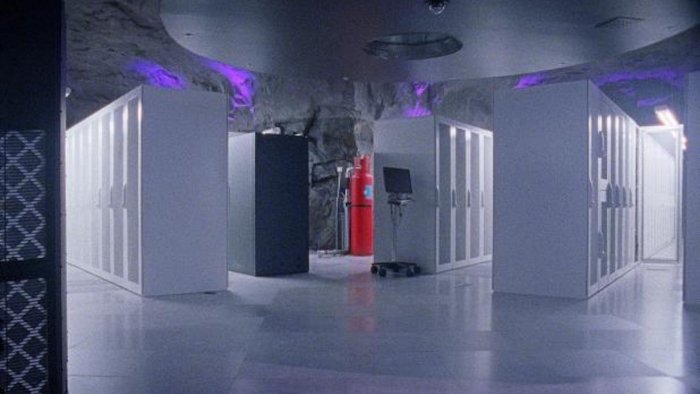
An alliance between this geological neo-naturalist perspective and the sometime paranoid big data rhetoric emerges in EMMA CHARLES’ neatly conceived White Mountain, a sort of inquiry on the sci-fi architecture and the underground context of the large data centre under the rocks of Vita Bergen Park in Stockholm. Is the unseen, the hidden, the difficult-to-see surreptitiously becoming the invisible in order to evoke the numinous?

To this regard, a fresh breeze of enlightenment (Enlightenment?) comes from DIANA VIDRASCU’s Volcano: What Does a Lake Dream? (already screened at the Locarno Film Festival, 2019). Researching active volcanos in the Azores, Vidrascu explicitly intertwines documentary, filtered and infrared images with an impressive sound partition in order to weave a discourse where the destructive power of nature is in dialogue with history and biographies. This dialogue is reflected in the editing of the film, which alternates abstraction and depiction, detail and panorama, and the play of different points of view. The outcome is nature as a dialectic pole, and not as transcendent, or numinous, escape point. Abstraction becomes here just an element of a complex formal discourse, a starting point for an experience that goes beyond abstraction itself.

Abstraction as starting point for an original experience is perfectly exemplified by KARL-HEINZ KLOPF’s Testa, a physical-historical journey on or, better, “under” Clorindo Testa’s National Public Library in Buenos Aires. The physical experience of the labyrinthine geometries of the building that we make while watching the film corresponds to the brutalist appropriation of matter beyond the functionalist credo of modernism. Experience – in architecture, in film – becomes a pivotal element to go beyond form, beyond abstraction, and include life up to its anecdotic level (the entire second part of the film is punctuated by witnesses of the workers at the Library).
When Experience frees the Concept
Concept illustration – you have an idea and then try to illustrate it through images – is certainly a typical plague of the art scene today, insofar as it reduces the potentialities of aesthetic to mere instruments to convey a message (which should be as easy as a newspaper title). If Jesse McLean’s Curious Fantasies perfectly embodies this poor pattern, MICHAEL FREI’s KIDS (already screened in many film festivals in Switzerland since the festival Fantoche Baden, 2019) displays a completely different interplay between concept and image. An extremely minimal visual vocabulary not only constitutes the base for an open conceptual “development” but also creates a precise atmosphere, between the video-game aesthetic and a metaphysical “theatre of the mind”.

A highly conceptual film, which is able to play with suspense and a brilliant image layer is WANGSHUI’s From Its Mouth Came a River of High-End Residential Appliances. The direct criticism of Hong Kong’s (and China’s) muscular building megalomania is subtly connected to traditional, environmental and sexual issues. Venturing a camera through the holes of skyscrapers makes of them symbols and not simply metaphors, as the symbol also keeps the material – experiential – dimension of what it refers to. The concept, the experience of it, and the experience tout court serve one another.
Back to the emotive wire
Yes, I call it “wire” because emotion often works as a thin wire that keeps a heterogenous filmic material, otherwise unintelligible, together.
This article contains a third-party video. If you would like to watch the video, please adjust your settings.
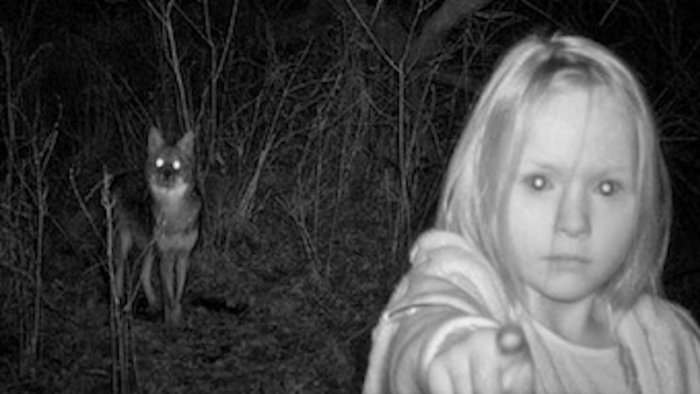
The same I would say of MIKE HOOLBOOM’s wonderful I Touched Her Legs Remix. Here, the wire is probably desire, but it is almost impossible to evaluate this film without the one – by Eva Marie Rødbro – that it remixes, I Touched Her Legs. Through the comparison between the two films, we see how Hoolboom operates a rarefaction and intensification: his selected photograms – with one video exception, regularly lasting two seconds – both stage and stress moments that worked as wave peaks of emotion in Rødbro’s film sequences. Other narrative lines emerge (most evident the one with eyes looking at the camera) and, above all, the sound track is automatically put forward. Less impressionistic and more declarative, Hoolboom’s film realises a form of “abstraction” – to come back to the previous idea – but without renouncing keeping the “emotive wire” at the centre of the film’s structure.
Accomplished compositions
Experimenting is not necessarily a synonym of fragmenting, hinting, sketching, trying without looking at an accomplished form. If experimenting has certainly something to do with the precious power of ellipsis, it can still aspire to produce accomplished works, works whose specificity rests in the precise composition of several elements (editing, sound, text, image, etc.). From this point of view, CHRISTOPH OERTLI’s Sensing Bodies and MAX PHILIPP SCHMID’s Membran are indubitably two brilliant examples of films where any detail is meaningful in order to compose a strong unity (I refer to my discussion of the former and Eva Kuhn’s discussion of the latter on Filmexplorer).
This article contains a third-party video. If you would like to watch the video, please adjust your settings.
This also applies to BEATRICE GIBSON’s I Hope I’m Loud when I’m Dead (already screened at the Internationale Kurzfilmtage Winterthur, 2019). Poems of CAConrad and Eileen Myles, excerpts from works by Audre Lorde and Adrienne Rich, and Pauline Oliveiros’ music all contribute to composing a film that breathes through a terrific work of editing. The theme of motherhood constitutes the centre of a dense cloud of emotive associations, which are linked to both fragility and the question of heritage, or transmission. The first person perspective of Beatrice-mother does not display a towering subjectivity but an inclusive collection of distant and close fragments of impressions, where the Other permeates the Self. The liberating dance at the end of the film (a homage to Claire Denis) works as a signal for a film that does not take “a” position but constantly moves, according to the rhythm of poetry.
Yes, poetry. This is probably the true horizon for any experimental film.
